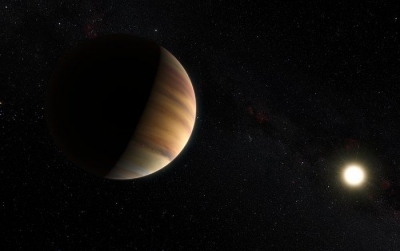
Astronomers have defined a new class of celestial objects called “ploonets,” which are orphaned moons that have escaped the bonds of their planetary parents.
Although there has yet to be a definitive detection of a ploonet orbiting a star, there are at least a few examples that might fit the bill. The evidence for these potential ploonets comes from perplexing exoplanetary observations that have yet to be adequately explained.
For instance, the researchers of the new paper describe how “moon-star collisions could explain the anomalous spectroscopic features of the stars Kronos and Krios (HD 240430 and HD 240429), which show deep traces of heavy elements.” This is because ploonets are likely made up of largely volatile material — which are light elements and compounds like hydrogen and water that rapidly evaporate — and because ploonets are located so close to their host stars, which exposes them to very strong stellar radiation.
According to the authors, this means that over millions of years, a ploonet will lose a significant chunk of its lighter elements, leaving behind a rather heavy-metal ploonet. If these metal-rich ploonets are then absorbed into their host star, they can produce observational signals that suggest the star instead devoured rocky planets, as may be the case with Kronos.
Picture Credit : Google

